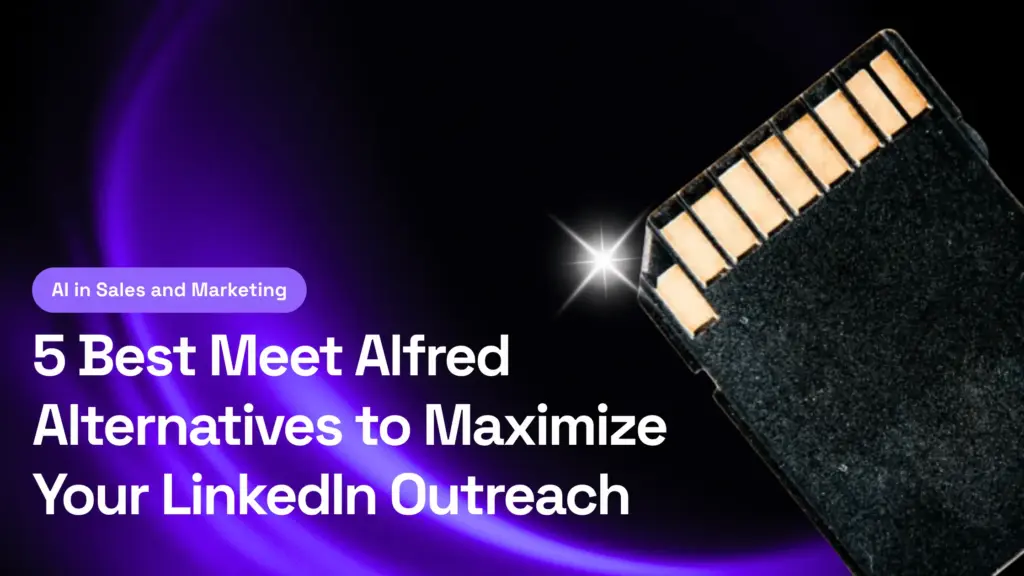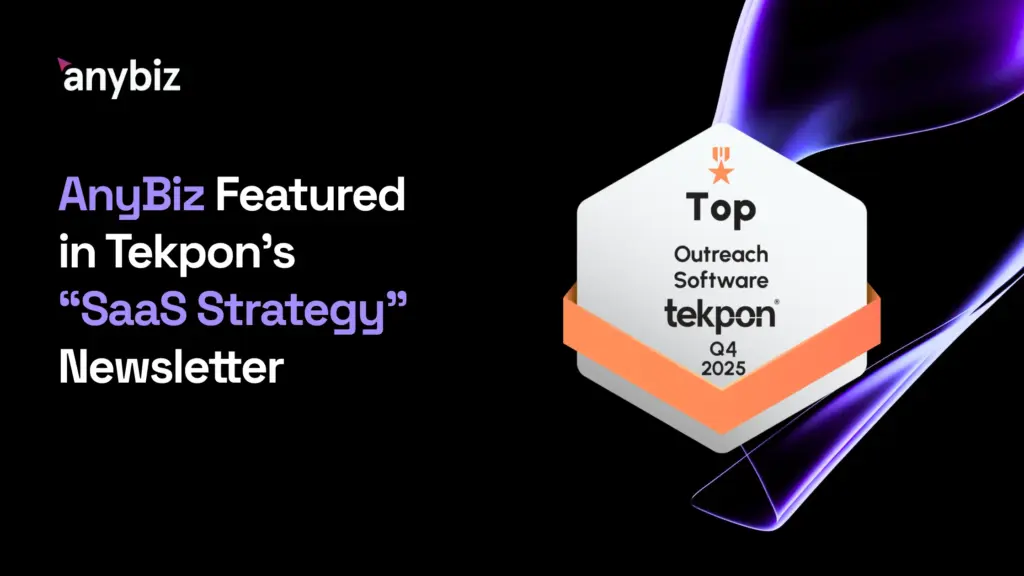Imagine speaking not to thousands of potential customers, but to a single individual whose interests, pain points, and needs you clearly understand. That is the power of a buyer persona — a realistic picture of your ideal client. Studies reveal that companies applying buyer personas have 124% more effective marketing strategies.
Why should this be relevant? Establishing buyer personas helps you to better grasp your clients and customize your offerings, marketing plans, and correspondence to fit their particular demands. Furthermore, artificial intelligence speeds up the creation and improvement of customer profiles guarantees more data-driven, exact development, and guarantees that your marketing initiatives always meet the target.
What is a Buyer Persona?
Based on actual facts and market research, a buyer persona is a semi-fictional depiction of your perfect consumer. It covers specifics on your clients’ values, background, and decision-making process. More customized and successful marketing initiatives as well as a better awareness of their target audience among companies depend on a well-defined consumer persona.
Principal Components of a Buyer Persona
- Age, gender, locality, degree of education, job title, and income level are among the demographics.
- Behaviors. Product preferences, buying tendencies, and method of decision-making.
- Obstacles. Particular issues or complaints your clients bring about.
- Objectives. What, both personally and professionally, your clients hope to accomplish?
- Buying Motivations. Including necessities, emotions, and outside influences, their choices of purchase reflect their own.
The Role of Buyer Personas in Marketing and Sales
Marketing strategy and sales techniques are much shaped by buyer personas. Understanding the particular demands and preferences of their target market helps companies to:
✅Tailor messaging and content to resonate more effectively with potential customers.
✅Segment their audience for more personalized campaigns.
✅Identify the most effective sales channels and touchpoints.
✅Improve product development by addressing real customer challenges.
What is a Negative Buyer Persona?
We spend a lot of time in the world of marketing and sales talking about finding, identifying, and targeting ideal clients. But an equally important — and often overlooked — factor is knowing who will not be a customer. This is where the Negative Buyer Persona comes in.
What is a Negative Buyer Persona?
A Negative Buyer Persona is a semi-fictional representation of the people who are unlikely to become your customers. There’s no clearer example of the opposite of an ideal customer profile: this is all the features, behavior, and motivation that identify your prospects as a bad fit for what you sell.
We cannot underscore the importance of defining negative personas only.
Creating negative buyer personas are as important as creating ideal buyers. This system is designed to help business tweak its marketing strategies, allocate resources more efficiently and ensure higher conversion rates. They may not be the right fit for you, but by knowing this sooner rather than later, businesses can better target and find the people who are more likely to want or need their product, producing better leads that turn into real results.
What Understanding Your Negative Personas Brings
The fundamental benefit of creating negative buyer personas: plumb level) cost savings. This enables businesses to save valuable marketing budget as they will no longer be targeting groups that are unlikely to convert. This way of strategizing enables the resources to be used wisely and concentrating solely on target segment with the higher score probability.
In addition, negative personas help businesses to sharpen their messaging and the right communication types. With such bullet points, companies can more precisely design their content, ads, and marketing in general with their customers in mind by explicitly outlining the personas of those who are not ideal customers.
Impact on Conversion Rates
The most obvious direct benefit of negative buyer personas is in increased conversion rates across the board. Filtering out poor leads at the outset of the marketing and sales processes, allows businesses to focus full force on leads more likely to convert.
Creating Effective Negative Buyer Personas
Creating the perfect negative buyer persona will require a lot of data analysis, market research, and input from your sales and customer service teams. This includes finding shared attributes among churned users, non-converting leads, and bad-fit clients. That info is then passed through to create rich profiles that inform marketing and sales approaches.
That nuanced understanding, precisely, is what businesses can bring to their market by applying the concept of negative buyer personas.
How to Create a Buyer Persona
Step 1: Market Research Step By Step Guide
First things you should start gathering data around your current customer and leads list. This will also help you to understand their behaviors, requirements, and problems. Here’s how to start:
Pull Information from Several Areas: Incorporating multiple sources like surveys, interviews, customer feedback, website analytics, social insights, or CRM data. This will enable you to generate a 360-degree customer view.
Key Questions to Ask:
- Who are they? Know their demographics (age, gender, job position, location, education, and all that).
- What are their challenges? Find out what their major problem areas are, and how your product/service aims to solve these.
- How do they decide what to buy? Understand the process they go through to make a purchase, who is involved in that process, and what is important to them when making decisions between one product or another.
This data is pivotal to creating an accurate buyer persona – not speculated information allowing you to tailor your marketing strategies, resonating with potential buyers.
Step 2: Identify Commonalities
After you have acquired your data, then the next step is to analyse your data in such a manner that reveals patterns which would help create buyer personas.
What to do?
Go through what data you have to see if there are any intertwining behavior, motivation and demographic patterns with your customers. Identify common pain points, purchasing behaviors, and shared goals that emerge again and again.
Segment Customers on the Basis of Insight. Using relatable attributes that you derive, next classify your customers–categories to better understand. In this, you can use:
🔹Customer Demographics – age group, job role, industry or location
🔹Purchase frequency, product preferences or buying journey stages
🔹Actions Motivations: What are the reasons behind their decisions- Price, convenience, quality?
That way, you can build unique buyer personas that actually present different slices of your audience. That gives you the ability to better customize marketing messages that your entire persona group will appreciate.
Step 3: Develop Comprehensive Persona Profiles
Once you have found the characteristics of each customer and they’re in groups, you need a complete profile for every buyer persona. These profiles will enable your marketing and sales teams to get worked up about the type of people they are speaking to, creating a deeper connection with your ideal client.
Add Core Info. For each person, enter the following core info:
- Common details. You should name these characters (e.g., Marketing Manager Mike) so they become more human-like.
- Age. Define them as from a certain age range (e.g., 35–45 years old).
Company Name: List the company where they work. - Job Title. Identify their profession and how senior or junior they are.
Industry (e.g., B2B SaaS, retail). - Pain Points. Identify the key hurdles that your product or service resolves.
Objectives. What they are trying to achieve, e.g., more revenue, efficiency gains. - Buying Triggers. The reason why people are going to use your product (e.g., requirements for growth, budget).
- Write a Short Story. To give every persona some human context, build out a brief story that showcases the profile living and breathing. Share daily life, what their motivations are, and how they decide things.
For instance, “38-year-old Marketing Manager Mike in a B2B SaaS.” As he looks around for more lead gen potential, always trying to best complement his team. His biggest struggle is time and managing the different marketing channels effectively. So while he’s bombarded by hundreds of tools every day, he primarily places value on those that save him time and are tangible, often making decisions based on usability and pricing.
This narrative helps you and your team think of the persona as a living human being, making it much easier to cater sales and marketing programs, messaging, or product solutions directly in line with what they actually care about.
Step 4: Define Negative Buyer Personas
In building positive buyer personas, you want to go a step further and define who is NOT your target audience. In practice, it helps ensure you aren’t going to waste valuable resources once a user becomes a lead and instead can focus on the users who actually buy!
These are individuals who:
- Cannot afford to spend on your product or service.
- Don’t belong to the right industry, are not large enough, or require features that you don’t offer.
- Are too advanced or too beginner-level for the solutions you provide.
- Take a long time to sell or are expensive in sales, leading to high acquisition costs.
- Are job seekers or students, not decision-makers who have influence in the buying process.
At the point of defining your negative personas, you can then:
- Eliminate them from the running to receive targeted marketing campaigns and email blasts.
- Concentrate on your content and messaging towards personas that are more inclined to convert.
- Cut out lost costs with poor audiences that would no longer see your ad as you stop losing money on illegitimate clicks/leads.
For example, if you are selling a high-end software solution, you can use negative personas of small businesses or freelancers with limited budgets who will not find value and justify the cost of your product.
Knowing who not to target is as crucial as knowing who your audience is. This also helps refine your marketing with increased efficiency and ROI.
How AI Can Help Create Buyer Personas
How AI is used to create buyer personas
AI has changed the game in personas for businesses. AI allows companies to gather, scrutinize, and act upon data faster and more accurately than they ever could before in order to create an even better customer segmentation.
Data Collection & Analytics
With AI, you can gather data from a wide range of customer touchpoints (such as social media platforms, CRM systems, and website analytics) and analyze it. AI-based tools make it easy; they pull in tons of data related to demographics, behaviors, and who is doing what online, so you do not have to spend hours sifting through big data sets manually. This automation is a time saver, and the data to base personas on is all-inclusive and current.
Identifying Patterns
This involves patterns in the big data analysis for which AI is best suited. With machine learning algorithms, AI is able to detect similarities related to your consumers in traits, behaviors, and motives within a parallel method. AI may, for example, identify customer segments more likely to make purchases due to certain browsing behaviors, interactions, or past orders.
Predictive Insights
From predicting customer purchase propensity, churn, or content engagement, AI algorithms can work wonders. These predictive insights can be used to better refine buyer personas and work out which customers are the most likely to convert or where they require more nurturing.
Continuous Improvement
That is one of the core benefits of AI; it gets better in building and evolving buyer personas as time goes on. This will ensure that personas are always fresh and precise, as AI tools can implement any new data that is collected.
Related –Predictive Lead Scoring: How It Can Boost Your Sales Success
Implementing Buyer Personas in AnyBiz.io

AnyBiz.io is an AI-powered lead generation platform that automates the entire sales and outreach process, making it easier for businesses to target the right prospects. By leveraging AI, AnyBiz.io scans for customer interest signals, patterns, and behaviors, allowing companies to optimize lead generation without manual intervention. This advanced technology ensures that every interaction is personalized, improving overall engagement and sales efficiency.
AI-Driven Persona Development
One of the standout features of AnyBiz.io is its ability to automatically create buyer personas using AI. Here’s how it works:
👉 Customer Interest Scanning. AnyBiz.io uses AI to track and analyze potential customer behaviors, identifying signals that indicate interest in your product or service. These signals help develop accurate profiles of your ideal customers.
👉 Behavioral Pattern Analysis. The AI collects and analyzes vast amounts of data, such as user interactions, website behavior, and social media activity, to detect patterns that shape a customer’s needs and preferences.
👉 Persona Creation. Based on this data, AnyBiz.io automatically creates detailed buyer personas that include demographics, behavior patterns, goals, pain points, and motivations. This AI-driven approach ensures that personas are highly specific and constantly updated with the most relevant data.
With these AI-generated buyer personas, AnyBiz.io tailors outreach messages to resonate with each profile, resulting in higher engagement rates and improved conversions.
AnyBiz is more than just a platform for defining buyer personas; it’s a complete lead generation solution that manages the entire process from start to finish. Using AI, AnyBiz identifies potential customers, builds personalized profiles, customizes messaging, handles communication, and even schedules meetings automatically. It’s a full-cycle lead generation tool that helps businesses efficiently connect with the right prospects and convert leads into paying customers.
How to Get Started with AnyBiz
Getting started with AnyBiz is simple. First, you link your LinkedIn account, and AnyBiz will automatically detect your website, allowing you to adjust it or indicate if you don’t have one. Next, your job position will be auto-generated, which you can modify if necessary. The platform will then generate descriptions for your offer, product, and the problems your business solves, which you can review and adjust. After that, you’ll select potential customers from a provided list to help target your audience, and choose the ideal job title of your target prospects. If you use Calendly, you can add your link for easier meeting scheduling.
After completing the setup process, AnyBiz takes over. The platform will purchase a domain for your outreach campaigns, create and set up mailboxes, and warm up your new email domain to ensure optimal deliverability. Once everything is ready, your AI sales agents will start working to find and engage potential customers on your behalf.
If you’re ready to see how AI-driven lead generation can transform your sales process, sign up for a 7-day free trial with AnyBiz today and experience the automation and optimization firsthand!
Conclusion
The success of marketing and sales strategies depends on buyer personas since they help you to clearly identify your potential clients and enable you to design more customized and successful programs.
Using AI-powered systems like AnyBiz.io, companies can automatically create thorough customer profiles and apply them to more successfully drive lead generation. With tailored outreach, AnyBiz.io removes the guesswork from targeting and engages with prospects, therefore optimizing conversions and simplifying your sales process.
Now is the ideal opportunity to investigate how AnyBiz.io could improve your lead generating approach using artificial intelligence.
📜 Related articles:
FAQ
1. What is a persona template, and how can it improve my marketing efforts?
A persona template is a pre-designed framework that helps you outline key characteristics of your ideal customer, including demographics, behaviors, and pain points. By using a persona template, you can ensure that your marketing efforts are more targeted and personalized, leading to higher engagement and conversion rates.
2. Where can I find a free buyer persona template?
There are several online platforms that offer a free buyer persona template to help businesses define their ideal customers. These templates provide a structured way to gather and organize information about your prospective customers, allowing you to tailor your marketing and sales strategies accordingly.
3. What are the best resources for buyer persona templates?
Many websites provide buyer persona templates that can be customized to fit your specific business needs. These templates help businesses categorize different types of customers and refine their marketing efforts to reach their ideal audience. Using a detailed template ensures that your buyer personas are comprehensive and useful for guiding business decisions.
4. How does a persona generator work?
A persona generator is an AI-powered tool that automates the creation of buyer personas by analyzing customer data. It helps identify different personas within your target audience, making it easier to segment your marketing efforts and create personalized strategies for different types of customers.
5. Why is it important to identify different personas in your business?
Identifying different personas allows you to understand the varying needs, behaviors, and pain points of your target audience. This enables you to tailor your marketing efforts to appeal to different types of customers, improving the chances of converting prospective customers into loyal clients.
6. How do buyer personas help in targeting prospective customers?
Buyer personas help you understand the preferences and behaviors of your prospective customers, allowing you to craft personalized messages that resonate with them. By defining specific personas, you can refine your marketing efforts and make them more effective at reaching and engaging different types of customers.
7. Can I create different types of customers using a persona template?
Yes, a persona template allows you to define different types of customers based on their demographics, goals, and buying behaviors. This helps in segmenting your audience and creating targeted marketing efforts that speak to each persona’s unique needs.
8. How do buyer personas influence my overall marketing efforts?
Buyer personas guide your marketing efforts by providing insight into what your prospective customers need and value. With well-defined personas, you can create tailored content, campaigns, and sales strategies that are more likely to resonate with your audience and drive conversions.



